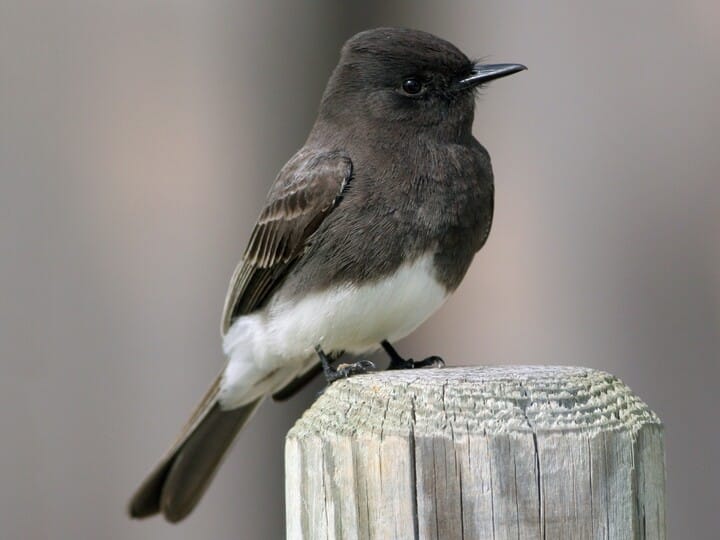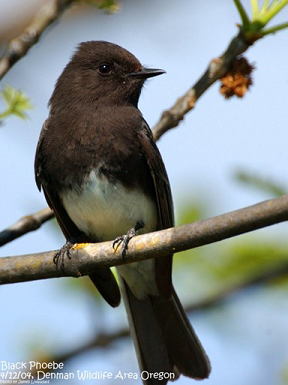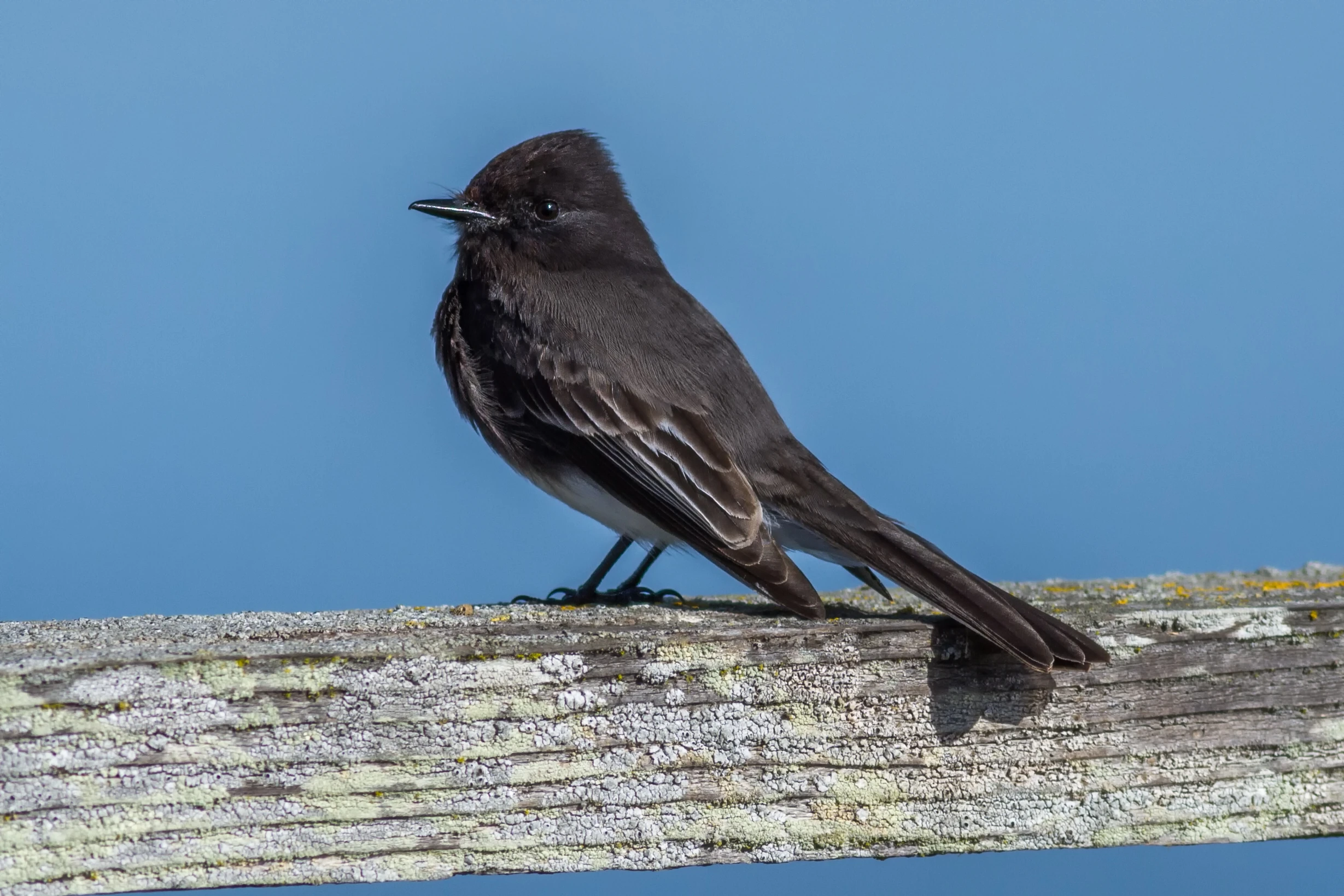Bird watching is a fascinating hobby. It can be a bit tricky at times.
Some birds look quite similar, which can make identification difficult. The Black Phoebe is one such bird that has lookalikes. These birds share some features, making it hard to tell them apart. Birds that resemble the Black Phoebe can be found in various regions.
They may have similar colors, sizes, or behaviors. Learning about these birds helps in identifying them correctly. This knowledge can make bird watching more enjoyable and less confusing. In this blog post, we will explore birds that look like the Black Phoebe. By the end, you will be better at spotting the differences. Let’s dive into the fascinating world of bird identification.

Credit: www.allaboutbirds.org
Introduction To Black Phoebe
Bird enthusiasts often find the Black Phoebe fascinating. This small bird displays unique traits. Understanding the Black Phoebe helps in identifying similar species. Let’s dive into its world.
Appearance And Behavior
The Black Phoebe measures about 7 inches in length. It has a distinct black head, chest, and upper parts. Its belly and undertail coverts are white. The contrast is striking. Males and females look similar.
Black Phoebes often perch on low branches. They make short flights to catch insects. Their flight is quick and direct. Watching their hunting style is captivating.
Habitat And Distribution
Black Phoebes thrive near water sources. They prefer streams, rivers, and ponds. They also adapt to urban areas. Parks and gardens with water features attract them.
These birds are common in the western United States. They range from Oregon to California. Some populations extend to Central and South America. Their adaptability ensures a wide presence.
Eastern Phoebe
The Eastern Phoebe is a small songbird found in North America. It belongs to the Tyrannidae family, just like the Black Phoebe. This bird is known for its distinctive song and tail-wagging behavior. Many birdwatchers often confuse it with the Black Phoebe due to their similarities.
Identification Tips
The Eastern Phoebe has a grayish-brown upper body and a whitish belly. Its head appears to be darker, almost black, especially around the crown and face. Look for a slight crest on the head. The tail is long and dark, often wagging up and down. During the breeding season, you might notice a pale yellow wash on the belly.
Similarities To Black Phoebe
Both the Eastern Phoebe and Black Phoebe have a similar body shape. They also share the tail-wagging behavior. While the Eastern Phoebe is grayish-brown, the Black Phoebe is more black with a white belly. Both birds are about 6 to 7 inches long. Their flight patterns are alike, often darting from a perch to catch insects. Observing these traits can help in correctly identifying these birds.
Say’s Phoebe
Say’s Phoebe is a bird with a grayish-brown body and rust-colored belly. It resembles the Black Phoebe but has a paler appearance. This bird is often seen in open areas and near buildings.
Have you ever spotted a bird and wondered if it was a Black Phoebe, only to find out it wasn’t? Say’s Phoebe is often mistaken for its black counterpart. Let’s dive into what makes this bird unique.Key Characteristics
Say’s Phoebe has a soft brownish-gray back and a rusty-orange belly. This color contrast can easily catch your eye. The bird is medium-sized, about 7.5 inches long, making it slightly larger than the Black Phoebe. They are often found in open habitats like fields and deserts. If you see a bird perched on a fence or low branch in such areas, it could very well be a Say’s Phoebe. They also tend to bob their tails up and down, a behavior similar to the Black Phoebe.Distinguishing Traits
The rusty-orange belly is the most distinguishing trait of Say’s Phoebe. Unlike the Black Phoebe’s entirely dark plumage, this splash of color sets them apart. Say’s Phoebe also has a more melodious and less harsh call. If you listen closely, the difference in their calls can help you identify them. Another trait to look out for is their nesting behavior. Say’s Phoebe often builds nests in human-made structures. If you find a nest on your porch or barn, there’s a good chance it belongs to them. Have you ever mistaken a Say’s Phoebe for a Black Phoebe? What did you notice first about it? Share your experience with us!Dark-eyed Junco
Dark-eyed Juncos resemble Black Phoebes with their dark feathers and small size. They have a distinctive white belly and outer tail feathers. Often seen hopping on the ground, they are common in North America.
Birds that look like the Black Phoebe can be fascinating to compare. One such bird is the Dark-eyed Junco. These little birds are common in North America and are often seen flitting around forests and backyards. Their striking dark eyes and distinct coloration make them a joy to observe.Visual Comparison
The Dark-eyed Junco has a rounded head, short beak, and a long tail. Unlike the Black Phoebe, which has an entirely black or dark grey body, the Dark-eyed Junco showcases a mix of colors. You’ll notice their slate-colored heads and upper bodies contrasting with their white bellies. Some even have a rusty or pinkish side, depending on the region. This color variation can be quite striking when you spot one in your garden. Next time you see a bird with a dark head and a white belly, take a closer look. It might just be a Dark-eyed Junco!Behavioral Differences
Watching how these birds behave can help you tell them apart. Black Phoebes are often seen perched in open areas, making sudden flights to catch insects mid-air. They are very agile and spend a lot of time near water bodies. Dark-eyed Juncos, on the other hand, are ground feeders. They hop around, foraging for seeds and small insects. They prefer wooded areas and are often seen scratching the ground with both feet to uncover food. Ever noticed a bird scratching the ground like a tiny chicken? That’s likely a Dark-eyed Junco, not a Black Phoebe. By observing these behaviors, you can better appreciate the unique characteristics of each bird. Have you seen either of these birds in your backyard? What did you notice about their actions? Engaging with these observations can make bird-watching a more enriching experience.Black-capped Chickadee
The Black-capped Chickadee is a small, charming bird. Many birdwatchers adore its friendly nature and distinct appearance. Though small, these birds are full of personality and energy.
Physical Features
The Black-capped Chickadee has a black cap and bib. These distinct features contrast with its white cheeks. Its back is soft gray, while the underparts are fluffy white. The wings have a subtle touch of black and white edging. This bird’s small size and rounded body make it look cute and compact.
Habitat Preferences
Black-capped Chickadees prefer mixed and deciduous forests. They are often seen in suburban areas with plenty of trees. These birds adapt well to various habitats. They thrive in both rural and urban settings. They love feeders, especially those filled with sunflower seeds. In winter, they seek shelter in dense foliage or cavities.

Credit: klamathbird.org
Eastern Kingbird
The Eastern Kingbird is a striking bird often mistaken for the Black Phoebe. This bird captures attention with its distinct features and behaviors. Let’s delve into what makes this bird unique.
Markings And Colors
The Eastern Kingbird boasts a sleek black head and back. Its wings also share this dark color. The bird’s underparts, however, are a stark white, creating a sharp contrast. A standout feature is the white-tipped tail. This marking is a key identifier. Another notable aspect is the small red patch on its crown. This patch often remains hidden but adds to the bird’s charm.
Behavior And Habitat
The Eastern Kingbird is known for its aggressive nature. It fiercely defends its territory against intruders. This bird often perches in open areas. It prefers places like fields, orchards, and forest edges. During the breeding season, it builds nests in trees or shrubs. These nests are usually found near water bodies. In flight, it displays agile and acrobatic maneuvers. This helps in catching insects, its primary food source. The bird’s call is a sharp, high-pitched chirp. This sound is often heard during the breeding season.
American Dipper
The American Dipper, a small, stout bird, thrives near fast-flowing streams. Often mistaken for the Black Phoebe, it shares similarities yet stands unique in several ways. Let’s explore its appearance and behaviors.
Appearance Details
The American Dipper has a round, plump body with a short tail. Its feathers are dark grey, blending well with rocky stream habitats. Unlike the Black Phoebe, it has a white eyelid that flashes during blinks. This bird measures about 7 inches in length. Its wings are short but strong, aiding in swift water dives.
Unique Behaviors
The American Dipper is known for its remarkable diving skills. It walks underwater, using its wings for propulsion. This bird feeds on aquatic insects and small fish. It often bobs up and down on rocks, a behavior called “dipping.” This unique action distinguishes it from other birds.
During winter, the American Dipper remains active, unlike many birds that migrate. It adapts to cold by seeking unfrozen streams. Its dense feathers and oil glands keep it insulated and dry. The American Dipper’s song is loud and melodious, echoing over rushing waters. This bird’s resilience and adaptability make it a fascinating subject.

Credit: birds.fandom.com
Frequently Asked Questions
What Is The Difference Between A Phoebe And A Junco?
Phoebes are flycatchers with a bobbing tail and a soft call. Juncos are sparrows with white outer tail feathers and a clicking call.
How Do You Tell A Pewee From A Phoebe?
Pewees have a peaked crown and two wing bars, while phoebes have a flatter head and no wing bars.
What Does It Mean When You See A Black Phoebe Bird?
Seeing a Black Phoebe bird symbolizes adaptability and resourcefulness. It may indicate good luck or positive changes ahead.
What Bird Sounds Like It’s Saying Phoebe?
The Eastern Phoebe bird sounds like it’s saying “phoebe. ” Its call is distinctive and easy to recognize.
Conclusion
Discovering birds that resemble the Black Phoebe can be exciting. These birds share similar traits but have unique characteristics. Observing them helps in learning more about nature. Birdwatching enhances appreciation for various species. Keep exploring and enjoy the beauty of these feathered friends.
Your curiosity can lead to amazing discoveries. Happy birdwatching!
